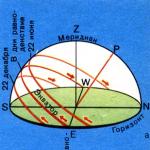Geothermal power plants in Russia are a promising renewable source. Russia has rich geothermal resources with high and low temperatures and is making good steps in this direction. The concept of environmental protection can help demonstrate the benefits of renewable energy alternatives.
In Russia, geothermal research was carried out in 53 scientific centers and higher educational institutions located in different cities and in different departments: the Academy of Sciences, the Ministries of Education, Natural Resources, Fuel and Energy. Such work is carried out in some regional scientific centers, such as Moscow, St. Petersburg, Arkhangelsk, Makhachkala, Gelendzhik, the Volga region (Yaroslavl, Kazan, Samara), the Urals (Ufa, Yekaterinburg, Perm, Orenburg), Siberia (Novosibirsk, Tyumen, Tomsk, Irkutsk, Yakutsk), Far East (Khabarovsk, Vladivostok, Yuzhno-Sakhalinsk, Petropavlovsk-on-Kamchatka).
In these centers, theoretical, applied, regional research is carried out, and special tools are created.
Use of Geothermal Energy
Geothermal power plants in Russia are used mainly for heat supply and heating of several cities and towns in the North Caucasus and Kamchatka with a total population of 500 thousand people. In addition, in some regions of the country, deep heat is used for greenhouses with a total area of 465 thousand m 2. The most active hydrothermal resources are used in the Krasnodar Territory, Dagestan and Kamchatka. Approximately half of the extracted resources is used to supply heat to housing and industrial premises, a third is used to heat greenhouses, and only about 13% is used for industrial processes.
In addition, thermal waters are used in approximately 150 sanatoriums and 40 mineral water bottling plants. The amount of electrical energy developed by geothermal power plants in Russia is increasing compared to the world, but remains extremely insignificant.
The share is only 0.01 percent of the country's total electricity generation.
The most promising area for using low-temperature geothermal resources is the use of heat pumps. This method is optimal for many regions of Russia - in the European part of Russia and in the Urals. So far, the first steps in this direction are being taken.
Electricity is generated at some power plants (GeoPPs) only in Kamchatka and the Kuril Islands. Currently, three stations operate in Kamchatka:
Pauzhetskaya GeoPP (12 MW), Verkhne-Mutnovskaya (12 MW) and Mutnovskaya GeoPP (50 MW).
Pauzhetskaya GeoPP inside
Two small geothermal power plants are in operation on the islands of Kunashir - Mendeleevskaya Geothermal Power Plant, Iturup - "Okeanskaya" with an installed capacity of 7.4 MW and 2.6 MW, respectively.
Geothermal power plants in Russia rank last in the world in terms of their volume.In Icelandaccounts for more than 25% of the electricity produced by this method.
Mendeleevskaya Geothermal Power Plant in Kunashir
Iturup – “Ocean”
Russia has significant geothermal resources and the existing potential is much greater than the current situation.
This resource is far from adequately developed in the country. In the former Soviet Union, geological exploration for minerals, oil and gas was well supported. However, such extensive activity is not aimed at studying geothermal reservoirs, even as a consequence of the approach: geothermal waters were not considered energy resources. But still, the results of drilling thousands of “dry wells” (colloquial in the oil industry) bring secondary benefits for geothermal research. These abandoned wells, which were used during oil industry research, are cheaper to repurpose for new purposes.
Advantages and challenges of using geothermal resources
The environmental benefits of using renewable energy sources such as geothermal are recognized. However, there are significant barriers to the development of renewable resources that hinder development. Detailed geological surveys and expensive drilling of geothermal wells represent a major financial outlay associated with significant geological and technical risks. 

There are also benefits to using renewable energy sources, including geothermal resources.
- First, the use of local energy resources can reduce dependence on imports or the need to build new generating capacity for heating in industrial or residential hot water supply areas.
- Second, replacing traditional fuels with clean energy produces significant environmental and public health improvements and associated savings.
- Third, the measure of energy savings is related to efficiency. District heating systems are common in Russian urban centers and need to be modernized and switched to renewable energy sources with their own advantages. This is especially important from an economic point of view; outdated district heating systems are not economical and their engineering life has already expired.
Geothermal power plants in Russia are “cleaner” compared to those using fossil fuels. The International Convention on Climate Change and European Community programs provide for the promotion of renewable energy sources. However, specific legal regulations regarding geothermal exploration and production are lacking in all countries. This is partly because waters are regulated under water laws, minerals under energy laws.
Geothermal energy does not belong to certain sections of legislation and it is difficult to decide on different methods of exploitation and use of geothermal power.
Geothermal Energy and Sustainable Development
Industrial development over the past two centuries has brought many innovations to human civilization and brought the exploitation of natural resources at an alarming rate. Since the seventies of the 20th century, serious warnings about the “limits to growth” have gone around the world with great effect: resource exploitation, the arms race, and wasteful consumption have squandered these resources at an accelerated pace, along with the exponential growth of the planet's population. All this madness requires more energy.
The most wasteful and unpromising is human irresponsibility in the habit of using up finite and rapidly depleting energy resources of coal, oil and gas. These irresponsible activities are carried out by the chemical industry to produce plastics, synthetic fibers, building materials, paints, varnishes, pharmaceutical and cosmetic products, pesticides and many other organic chemical products.
But the most catastrophic effect of the use of fossil fuels is the balance of the biosphere and climate to such an extent that it will irreversibly affect our life choices: the growth of deserts, acid rain spoiling fertile lands, poisoning of rivers, lakes and groundwater, spoilage of drinking water for a growing population planet, - and worst of all - more frequent weather disasters, retracting glaciers, destroying ski resorts, melting glaciers, landslides, more severe storms, flooding of densely populated coastal areas and islands, thereby endangering people and rare species of flora and fauna due to migrations .
The loss of fertile lands and cultural heritage is due to the extraction of inexorably growing fossil fuels, emissions into the atmosphere that cause global warming.
The path to clean, sustainable energy that preserves resources and brings the biosphere and climate into the natural balance is associated with the use of geothermal power plants in Russia.
Scientists understand the need to reduce the burning of fossil fuels beyond the Kyoto Protocol targets in order to slow global warming of the Earth's atmosphere.
The current demand for geothermal energy as one of the types of renewable energy is due to: the depletion of fossil fuel reserves and the dependence of most developed countries on its imports (mainly oil and gas imports), as well as the significant negative impact of fuel and nuclear energy on the human environment and on wild nature. However, when using geothermal energy, its advantages and disadvantages should be fully taken into account.
The main advantage of geothermal energy is the possibility of its use in the form of geothermal water or a mixture of water and steam (depending on their temperature) for the needs of hot water and heat supply, for generating electricity or simultaneously for all three purposes, its practical inexhaustibility, complete independence from conditions environment, time of day and year. Thus, the use of geothermal energy (along with the use of other environmentally friendly renewable energy sources) can make a significant contribution to solving the following urgent problems:
· Ensuring sustainable heat and electricity supply to the population in those areas of our planet where centralized energy supply is absent or is too expensive (for example, in Russia, Kamchatka, in the Far North, etc.).
· Ensuring a guaranteed minimum energy supply to the population in areas of unstable centralized energy supply due to a shortage of electricity in energy systems, preventing damage from emergency and restrictive shutdowns, etc.
· Reducing harmful emissions from power plants in certain regions with difficult environmental conditions.
At the same time, in the volcanic regions of the planet, high-temperature heat that heats geothermal water to temperatures exceeding 140-150°C is most economically used to generate electricity. Underground geothermal waters with temperatures not exceeding 100°C are, as a rule, economically profitable to use for heating, hot water supply and other purposes in accordance with the recommendations given in table 1.
Table 1
Please note that these recommendations, as geothermal technologies develop and improve, are being revised towards the use of geothermal waters with increasingly lower temperatures for the production of electricity. Thus, the currently developed combined schemes for the use of geothermal sources make it possible to use coolants with initial temperatures of 70-80°C for the production of electricity, which is significantly lower than those recommended in table 1 temperatures (150°C and above). In particular, hydro-steam turbines have been created at the St. Petersburg Polytechnic Institute, the use of which at geothermal power plants makes it possible to increase the useful power of double-circuit systems (the second circuit is water steam) in the temperature range of 20-200°C by an average of 22%.
The efficiency of using thermal waters increases significantly when used in a complex manner. At the same time, in various technological processes it is possible to achieve the most complete realization of the thermal potential of water, including residual, and also to obtain valuable components contained in thermal water (iodine, bromine, lithium, cesium, kitchen salt, Glauber's salt, boric acid and many others ) for their industrial use.
The main disadvantage of geothermal energy is the need to reinject waste water into an underground aquifer. Another disadvantage of this energy is the high mineralization of thermal waters of most deposits and the presence of toxic compounds and metals in the water, which in most cases excludes the possibility of discharging these waters into natural water systems located on the surface. The disadvantages of geothermal energy noted above lead to the fact that for the practical use of the heat of geothermal waters, significant capital costs are required for drilling wells, reinjection of waste geothermal water, as well as for the creation of corrosion-resistant thermal equipment.
However, due to the introduction of new, less expensive technologies for drilling wells, and the use of effective methods for purifying water from toxic compounds and metals, capital costs for collecting heat from geothermal waters are continuously decreasing. In addition, it should be borne in mind that geothermal energy has recently made significant progress in its development. Thus, recent developments have shown the possibility of generating electricity at a temperature of the steam-water mixture below 80°C, which allows for a much wider use of geothermal power plants for generating electricity. In connection with this, it is expected that in countries with significant geothermal potential, primarily in the United States, the capacity of geothermal power plants will double in the very near future. .
geothermal source energy potential
Nuclear power plant(NPP) - a nuclear installation for the production of energy in specified modes and conditions of use, located within the territory defined by the project, in which a nuclear reactor (reactors) and a complex of necessary systems, devices, equipment and structures with the necessary workers are used to achieve this purpose
Advantages and disadvantages
The main advantage is practical independence from fuel sources due to the small volume of fuel used, for example, 54 fuel assemblies with a total mass of 41 tons per power unit with a VVER-1000 reactor in 1-1.5 years (for comparison, Troitskaya GRES alone with a capacity of 2000 MW burns two trainloads of coal per day). The costs of transporting nuclear fuel, unlike traditional fuel, are negligible. In Russia, this is especially important in the European part, since the delivery of coal from Siberia is too expensive.
A huge advantage of a nuclear power plant is its relative environmental cleanliness. At thermal power plants, the total annual emissions of harmful substances, which include sulfur dioxide, nitrogen oxides, carbon oxides, hydrocarbons, aldehydes and fly ash, per 1000 MW of installed capacity range from approximately 13,000 tons per year at gas-fired thermal power plants and up to 165,000 tons per year at pulverized-coal thermal power plants. . There are no such emissions at nuclear power plants. A thermal power plant with a capacity of 1000 MW consumes 8 million tons of oxygen per year to oxidize fuel, while nuclear power plants do not consume oxygen at all. In addition, a coal station produces a larger specific (per unit of electricity produced) release of radioactive substances. Coal always contains natural radioactive substances; when coal is burned, they almost completely enter the external environment. At the same time, the specific activity of emissions from thermal power plants is several times higher than for nuclear power plants. The only factor in which nuclear power plants are inferior in environmental terms to traditional CPPs is thermal pollution caused by high consumption of process water for cooling turbine condensers, which is slightly higher in nuclear power plants due to lower efficiency (no more than 35%), but this factor is important for water ecosystems, and modern nuclear power plants mostly have their own artificially created cooling reservoirs or are even cooled by cooling towers. Also, some nuclear power plants remove part of the heat for the needs of heating and hot water supply to cities, which reduces unproductive heat losses; there are existing and promising projects for the use of “extra” heat in energy-biological complexes (fish farming, oyster farming, heating greenhouses, etc.). In addition, in the future it is possible to implement projects combining nuclear power plants with gas turbine units, including as “add-ons” to existing nuclear power plants, which may allow achieving efficiency similar to that of thermal power plants.
For most countries, including Russia, generating electricity at nuclear power plants is no more expensive than at pulverized coal and, especially, gas-oil thermal power plants. The advantage of nuclear power plants in the cost of electricity produced is especially noticeable during the so-called energy crises that began in the early 70s. A fall in oil prices automatically reduces the competitiveness of nuclear power plants.
The costs of constructing a nuclear power plant, according to estimates based on projects implemented in the 2000s, are approximately equal to $2,300 per kW of electrical power; this figure can decrease with mass construction (for coal-fired thermal power plants $1,200, for gas - $950). Forecasts for the cost of projects currently being implemented converge on the figure of $2,000 per kW (35% higher than for coal-fired power plants, 45% higher than for gas-fired thermal power plants).
The main disadvantage of nuclear power plants is the severe consequences of accidents, to avoid which nuclear power plants are equipped with the most complex safety systems with multiple reserves and redundancy, ensuring the exclusion of core melting even in the event of a maximum design basis accident (local complete transverse rupture of the reactor circulation circuit pipeline).
A serious problem for nuclear power plants is their decommissioning after their resource has been exhausted; according to estimates, this can amount to up to 20% of the cost of their construction.
For a number of technical reasons, it is extremely undesirable for nuclear power plants to operate in maneuverable modes, that is, to cover the variable part of the electrical load schedule
Thermal (steam turbine) power plant: Power plants that convert the thermal energy of fuel combustion into electrical energy are called thermal (steam turbine). Some of their advantages and disadvantages are given below.
Advantages 1. The fuel used is quite cheap. 2. Require less capital investment compared to other power plants. 3. Can be built anywhere regardless of fuel availability. Fuel can be transported to the power plant location by rail or road transport. 4. Occupy a smaller area compared to hydroelectric power plants. 5. The cost of generating electricity is less than that of diesel power plants.
Flaws 1. They pollute the atmosphere, releasing large amounts of smoke and soot into the air. 2. Higher operating costs compared to hydroelectric power plants
Hydroelectric power station (HPP)- a power plant that uses the energy of water flow as an energy source. Hydroelectric power plants are usually built on rivers by constructing dams and reservoirs.
Boguchanskaya hydroelectric power station. 2010 The newest hydroelectric power station in Russia
For the efficient production of electricity at a hydroelectric power station, two main factors are necessary: a guaranteed supply of water all year round and possibly large slopes of the river; canyon-like terrain types are favorable for hydraulic construction
This is a complex structure that uses the deep heat of the earth to generate electricity. The complex, as a rule, includes: boreholes that bring a steam-water mixture or superheated steam to the surface of the earth, with a system of pipelines and separation devices; generators; machine room where steam turbines, condensing and other installations are located; technical water supply system cooling turbine condensers; high-voltage electrical equipment. For geothermal power plants The depth of wells, as a rule, does not exceed 3 km. Therefore, they can not be installed everywhere, but only where, at relatively shallow depths, the required temperature is already available. These are places where tectonic plates meet, geysers, and regions with seismic activity.Geothermal energy is a critical resource in volcanically active areas such as Iceland and New Zealand. How economically profitable this is will depend on exactly what temperature the water is heated to. This in turn will depend on how hot the rocks are and how much water we pump to them. In a hot area, water is pumped into a well, and when it rises under pressure and comes to the surface, it turns into steam. The steam can be used for a turbogenerator or through a heat exchanger to heat houses. Steam must be cleaned before being supplied to rotate the turbine.
Geothermal energy has its advantages and disadvantages.
Advantages :
— there is no environmental pollution;
— there is no greenhouse effect;
— geothermal power plant takes up little space;
— no fuel is consumed;
— after construction geothermal power plant , it turns out almost free energy.
The following disadvantages exist:
- construction geothermal power plants perhaps not everywhere;
— an appropriate type of hot stones and their availability are required; Only a type of rock that can be easily drilled is suitable;
— hazardous gases and minerals may escape to the surface of the earth and problems with their safe disposal may arise. News
The resources of our planet are not endless. Using natural hydrocarbons as the main source of energy, humanity risks one day discovering that they are exhausted and leading to a global crisis in the consumption of familiar goods. The 20th century was a time of major shifts in energy. Scientists and economists in different countries are seriously thinking about new ways to produce and renewable sources of electricity and heat. The greatest progress has been made in the field of nuclear research, but interesting ideas have emerged regarding the beneficial use of other natural phenomena. Scientists have long known that our planet is hot inside. Geothermal power plants have been created to benefit from deep-seated heat. There are few of them in the world yet, but perhaps over time there will be more. What are their prospects, are they dangerous and can we count on a high share of gas turbine power plants in the total volume of energy produced?
First steps
In their daring search for new energy sources, scientists have considered many options. The possibilities of harnessing the energy of the tides of the World Ocean and transforming sunlight were studied. They also remembered the ancient windmills, equipping them with generators instead of stone millstones. Geothermal power plants are also of great interest, capable of generating energy from the heat of the lower hot layers of the earth's crust.
In the mid-sixties, the USSR did not experience a resource shortage, but the energy availability of the national economy, nevertheless, left much to be desired. The reason for lagging behind industrialized countries in this area was not a lack of coal, oil or fuel oil. The huge distances from Brest to Sakhalin made it difficult to deliver energy; it became very expensive. Soviet scientists and engineers proposed the most daring solutions to this problem, and some of them were implemented.

In 1966, the Pauzhetskaya geothermal power plant began operating in Kamchatka. Its power was a rather modest figure of 5 megawatts, but this was quite enough to supply nearby settlements (the villages of Ozernovsky, Shumnoye, Pauzhetki, villages of the Ust-Bolsheretsky district) and industrial enterprises, mainly fish canning factories. The station was experimental, and today we can safely say that the experiment was a success. The Kambalny and Koshelev volcanoes are used as heat sources. The conversion was carried out by two turbine-generator units, initially 2.5 MW each. A quarter of a century later, the installed capacity was raised to 11 MW. The old equipment completely exhausted its service life only in 2009, after which a complete reconstruction was carried out, which included the laying of additional coolant pipelines. The experience of successful operation prompted energy engineers to build other geothermal power plants. There are five of them in Russia today.

How does it work
Initial data: deep in the earth's crust there is heat. It needs to be converted into energy, such as electricity. How to do it? The operating principle of a geothermal power plant is quite simple. Water is pumped underground through a special well, called an input or injection well (in English injection, that is, “injection”). A geological survey is required to determine the appropriate depth. Near the layers heated by magma, an underground flowing pool should ultimately form, playing the role of a heat exchanger. The water heats up greatly and turns into steam, which is supplied through another well (working or production) to the turbine blades connected to the generator axis. At first glance, everything looks very simple, but in practice, geothermal power plants are much more complex and have various design features due to operational problems.

Advantages of Geothermal Energy
This method of obtaining energy has undeniable advantages. Firstly, geothermal power plants do not require fuel, the reserves of which are limited. Secondly, operating costs are reduced to the costs of technically regulated work on the planned replacement of components and maintenance of the technological process. The payback period for investments is several years. Thirdly, such stations can conditionally be considered environmentally friendly. There are, however, sharp moments at this point, but more on them later. Fourthly, no additional energy is required for technological needs; pumps and other energy receivers are powered from extracted resources. Fifthly, the installation, in addition to working for its intended purpose, can desalinate the water of the World Ocean, on the shores of which geothermal power plants are usually built. There are pros and cons, however, in this case as well.

Flaws
In the photographs everything looks simply wonderful. The buildings and installations are aesthetically pleasing; there are no clouds of black smoke rising above them, only white steam. However, not everything is as wonderful as it seems. If geothermal power plants are located near populated areas, residents of the surrounding areas are annoyed by the noise produced by the enterprises. But this is only the visible (or rather, audible) part of the problem. When drilling deep wells, you can never predict what will come out of them. It could be toxic gas, mineral waters (not always healing) or even oil. Of course, if geologists stumble upon a layer of mineral resources, then this is even good, but such a discovery could completely change the usual way of life of local residents, so regional authorities are extremely reluctant to give permission to even carry out research work. In general, choosing a location for a gas turbine power plant is quite difficult, because as a result of its operation, a ground failure may well occur. Conditions within the earth's crust change, and if the heat source loses its thermal potential over time, the construction costs will be in vain.

How to choose a place
Despite numerous risks, geothermal power plants are being built in different countries. Any method of obtaining energy has advantages and disadvantages. The question is how accessible other resources are. After all, energy independence is one of the foundations of state sovereignty. A country may not have mineral reserves, but have many volcanoes, like Iceland, for example.
It should be taken into account that the presence of geologically active zones is an indispensable condition for the development of the geothermal energy industry. But when deciding on the construction of such a facility, it is necessary to take into account safety issues, therefore, as a rule, geothermal power plants are not built in densely populated areas.
The next important point is the availability of conditions for cooling the working fluid (water). An ocean or sea coast is quite suitable as a location for a gas turbine power plant.

Kamchatka
Russia is rich in all types of natural resources, but this does not mean that there is no need to treat them with care. Geothermal power plants are being built in Russia, and more and more actively in recent decades. They partially meet the energy needs of remote areas of Kamchatka and the Kuril Islands. In addition to the already mentioned Pauzhetskaya GTPP, the 12-megawatt Verkhne-Mutnovskaya GTPP was put into operation in Kamchatka (1999). Much more powerful is the Mutnovskaya geothermal power plant (80 MW), located near the same volcano. Together they provide more than a third of the region's energy consumption.
Kuril Islands
The Sakhalin region is also suitable for the construction of geothermal energy production enterprises. There are two of them: Mendeleevskaya and Okeanskaya GTPP.
The Mendeleevskaya GTPP is designed to solve the problem of energy supply to the island of Kunashir, on which the urban-type settlement of Yuzhno-Kurilsk is located. The station did not get its name in honor of the great Russian chemist: that is the name of the island volcano. Construction began in 1993, nine years later the enterprise was put into operation. Initially, the capacity was 1.8 MW, but after modernization and the launch of the next two stages it reached five.
In the Kuril Islands, on the island of Iturup, in the same 1993, another gas turbine power plant was founded, called “Okeanskaya”. It started operating in 2006, and a year later it reached its design capacity of 2.5 MW.

World experience
Russian scientists and engineers became pioneers in many branches of applied science, but geothermal power plants were still invented abroad. The world's first gas turbine power plant (250 kW) was Italian; it began operating in 1904; its turbine was rotated by steam coming from a natural source. Previously, such phenomena were used only for medicinal and resort purposes.
Currently, Russia’s position in the field of using geothermal heat cannot be called advanced either: an insignificant percentage of the electricity generated in the country comes from five stations. These alternative sources are most important to the Philippine economy: they account for one out of every five kilowatts produced in the republic. Other countries have also moved forward, including Mexico, Indonesia and the United States.

In the vastness of the CIS
The level of development of geothermal energy is influenced to a greater extent not by the technological “advancement” of a particular country, but by the awareness of its leadership of the urgent need for alternative sources. There is, of course, “know-how” regarding ways to combat scale in heat exchangers, methods of controlling generators and other electrical parts of the system, but all this methodology has long been known to specialists. In recent years, many post-Soviet republics have shown great interest in the construction of geothermal power plants. In Tajikistan, areas that represent the country’s geothermal wealth are being studied; the construction of a 25-megawatt Dzhermakhbyur station in Armenia (Syunik region) is underway; corresponding research is being conducted in Kazakhstan. The hot springs of the Brest region have become a subject of interest for Belarusian geologists: they began test drilling of the two-kilometer Vychulkovskaya well. In general, geoenergy most likely has a future.
However, the Earth’s heat must also be handled with care. This natural resource is also limited.




















